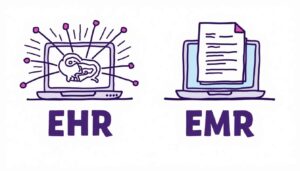What is a Medical Transcriptionist: A Complete Guide for Doctors Looking to Outsource
23 Jul 2025 By: Mary Dellosa
Updated
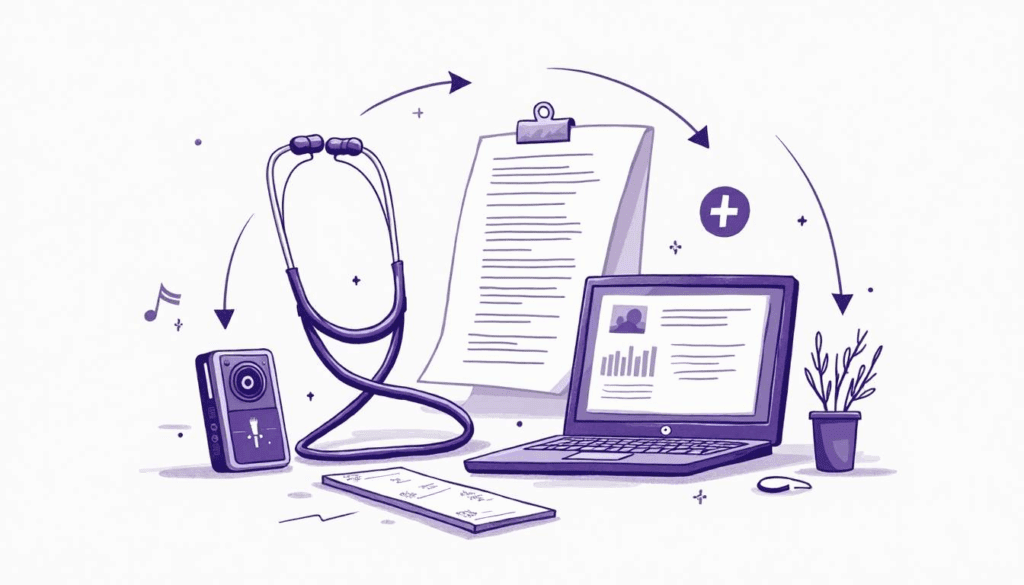
Healthcare moves fast, so clear and quick records matter more than ever. Doctors juggle patient care, admin work, and EHR demands daily. One smart way to ease this load is by hiring a medical transcriptionist. So, what does a medical transcriptionist do, and why should you outsource? This guide breaks it down and explains their role, key skills, and how outsourcing helps.
Understanding What is a Medical Transcriptionist
What is Medical Transcriptionist?
A medical transcriptionist listens to voice notes from doctors and types them into written reports. These include histories, exams, discharge notes, and surgery reports. They make sure each report is clear, correct, and follows medical and legal rules. Their work helps other providers give safe and steady care through accurate records. They also check reports for errors and fix wrong terms to avoid dangerous mistakes. This careful work matters because errors can lead to wrong care or missed issues. They often work with doctors to clear up unclear speech or fill in missing details. This teamwork improves report quality and deepens the understanding of patient cases.
Skills and Qualifications Required
Medical transcriptionists help doctors by turning voice notes into written reports. They know medical terms and how to write them the right way. Many take training or get certified to do this job well. They also follow strict rules to keep patient info private.
They really have to listen with care, type quickly, and stay on point. Deadlines come fast, so being organized is a must. And because healthcare never stands still, they’re always learning something new to keep up.
Many now work from home, which gives freedom but also needs self-control.
At home, they set up a quiet space and manage their own time. They fix tech problems and stay on task without anyone watching. They must work well on their own but also talk clearly with doctors when needed.
Doctors rely on them for clean and accurate notes. This helps other care teams avoid mistakes and treat patients safely. That teamwork matters more than most people know.
As telehealth grows, their role gets even bigger. They take a load off doctors so they can focus on patients. You may not see them, but they quietly help keep everything in healthcare moving smoothly.
Why Doctors Should Consider Outsourcing Medical Transcription
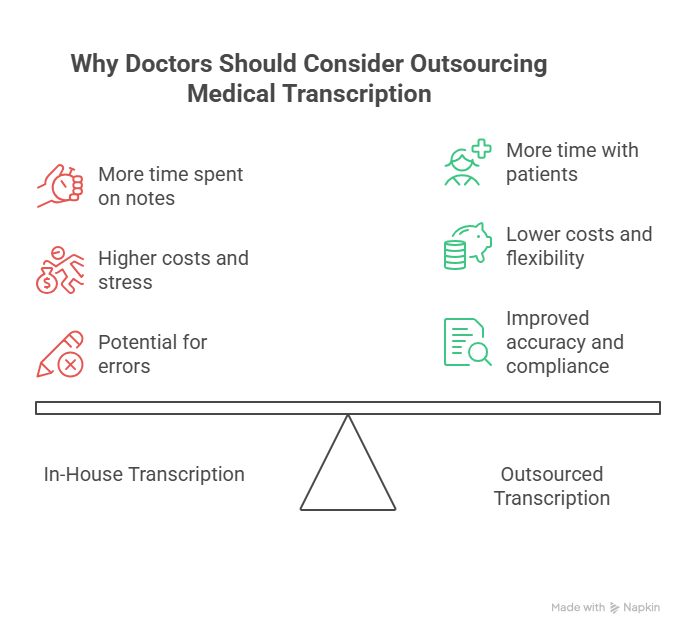
Time Efficiency and Focus on Patient Care
Doctors spend about twice as much time on notes as they do with patients. No wonder many feel tired and burned out. By outsourcing transcription, they can let go of the paperwork. That means more time to focus on patients and grow their practice. It also helps them build real, trusting relationships.
With fewer notes to handle, they can keep up with new treatments and tools. That leads to better care and better results for everyone.
Cost-Effectiveness and Resource Management
Hiring in-house means covering pay, training, and tools. It gets expensive fast and adds stress. Outsourcing is easier. You just pay for what you use—nothing more.
Most services use great tools and double-check their work. You get clean, accurate notes without extra effort. As things get busier, you can scale up fast. No hiring, no stress—just simple, reliable help when you need it.
Improved Accuracy and Compliance
Professional transcription services use trained medical transcriptionists who know medical terms, short forms, and rules. This lowers mistakes that may harm patients or cause billing issues.
Trusted services follow HIPAA rules to guard patient data. They also use strong encryption to keep files safe. This helps doctors focus on care, not data risks.
How to Choose the Right Medical Transcription Service
Assessing Experience and Specialization
Not all transcription services offer the same quality. Pick one with experience in your medical field. Needs differ in radiology, psychiatry, and cardiology.
Choose a provider who knows your terms and style. Ask for case studies or reviews. Experts in your field can guide you on rules and best practices too.
Evaluating Turnaround Times and Reliability
Getting records on time matters for patient care and billing. Talk to providers about how fast they work and if they can handle rush or large jobs.
Look for services with 24/7 help and flexible delivery. Ask how they perform during busy seasons. A dependable partner lets you focus more on your patients.
Technology Integration and Security
Modern services blend speech tech with human checks to boost accuracy. Make sure their tools fit smoothly with your EHR to keep work flowing well. Security comes first. Check for encryption, secure servers, and HIPAA rules. Ask about backups and disaster plans too.
Strong security keeps patient data safe and helps you stay compliant. Also, see if they train your staff. That support can make your workflow faster and easier.
Steps to Outsource Medical Transcription Successfully
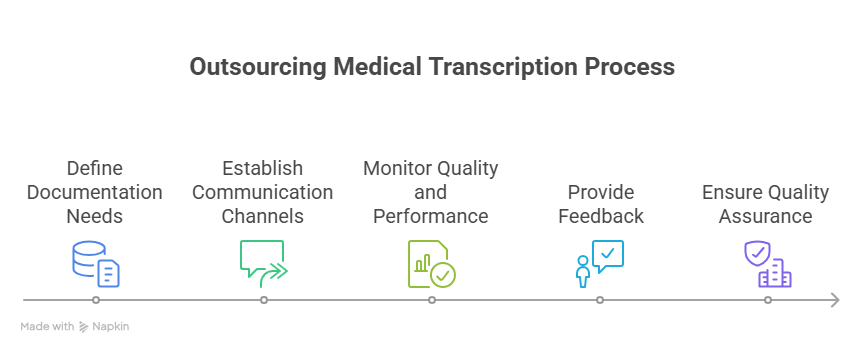
Define Your Practice’s Documentation Needs
Before you outsource, review how many and what kinds of reports you create. Spot busy times or special tasks needing fast work. This helps you explain your needs clearly to the transcription service.
Establish Clear Communication Channels
Clear communication with your transcription service is key. Set steps for sending files, getting reports, and fixing errors. Give regular feedback to keep quality high. This helps them learn your needs and work style.
Monitor Quality and Performance
Establish key performance indicators (KPIs) such as accuracy rates, turnaround times, and error resolution responsiveness. Regularly review transcripts to ensure they meet your standards and provide feedback to the provider for continuous improvement.
Many transcription services offer quality assurance guarantees and revision policies to address any discrepancies promptly.
Common Challenges and How to Overcome Them
Maintaining Accuracy with Complex Medical Terminology
Medical terms change fast and can confuse. To cut mistakes, pick trained transcriptionists and use clear templates and glossaries. You can also blend voice tech with human checks. This keeps things quick but still accurate.
Ensuring Data Security and Compliance
Outsourcing shares private patient data, so security is a must. Pick providers with strong safety steps like encryption and secure file transfers. Ask for proof of HIPAA compliance and data rules before you sign anything.
Managing Workflow Integration
Adding a new transcription service can disrupt your routine. Work with the provider to match workflows and train your team on changes. Use software that fits with your system. Keep communication clear to ensure a smooth switch.
The Future of Medical Transcription: Trends to Watch
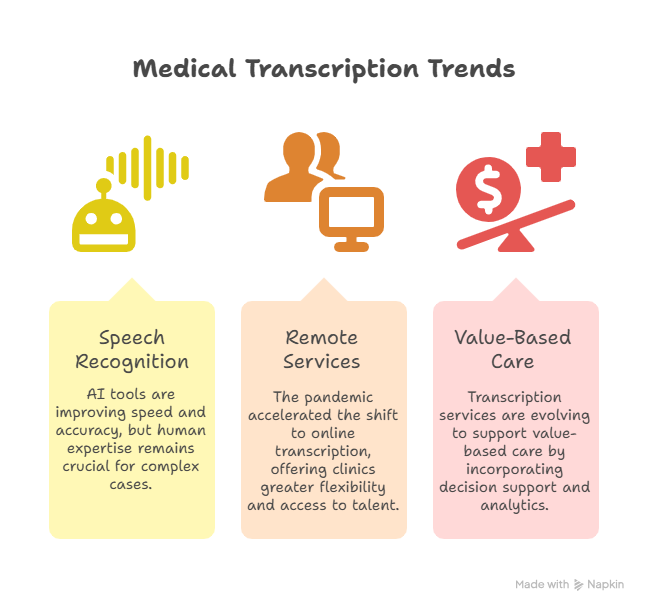
Advancements in Speech Recognition Technology
AI is changing medical transcription with fast, accurate voice-to-text tools. It works well for simple notes and saves time. But skilled humans are still key. They handle complex cases, check for errors, and understand context better than machines.
Increased Demand for Remote and Outsourced Services
COVID-19 sped up remote work in healthcare. Now, more transcription services run online. This gives clinics more talent choices and flexible service options.
Focus on Value-Based Care Documentation
Value-based care is changing how records are done. Focus now is on results and quality. Transcription services now add tools like decision support and analytics to make notes more useful.
Trending now
Doctors often feel overwhelmed and exhausted from constantly working in stressful and repetitive environments, especially with the growing load of paperwork. This burnout doesn’t just affect their well-being—it also makes it harder for them to give patients the best care. In fact, 42% of doctors in a U.S. survey said they feel burned out, with many saying that cutting down on admin work and long hours would help. Things like lack of sleep, trying to do everything perfectly, and not having time for themselves also play a big role.
Burnout shows up in many ways—feeling tired, getting sick often, losing motivation, or avoiding work altogether. One way to ease this burden is by using medical transcription tools. These let doctors quickly and accurately record patient notes without having to type everything out. It saves time, reduces stress, helps doctors focus more on patients, and keeps medical records safe and compliant with rules.
Conclusion
Outsourcing medical transcription helps doctors work smarter. It cuts admin tasks and boosts the quality of records. By picking the right service and managing the shift well, you stay focused on patient care. It also keeps records accurate and compliant.
As healthcare changes, outsourcing can modernize your practice. It’s a smart move to improve how your clinic runs. Our team of professional virtual assistants is trained to handle medical transcription and other support tasks with precision, care, and confidentiality. By outsourcing to HelpSquad, you’ll free up valuable time, reduce stress, and give your patients the attention they deserve. As healthcare evolves, we’re here to help your practice stay efficient, modern, and human-centered.


